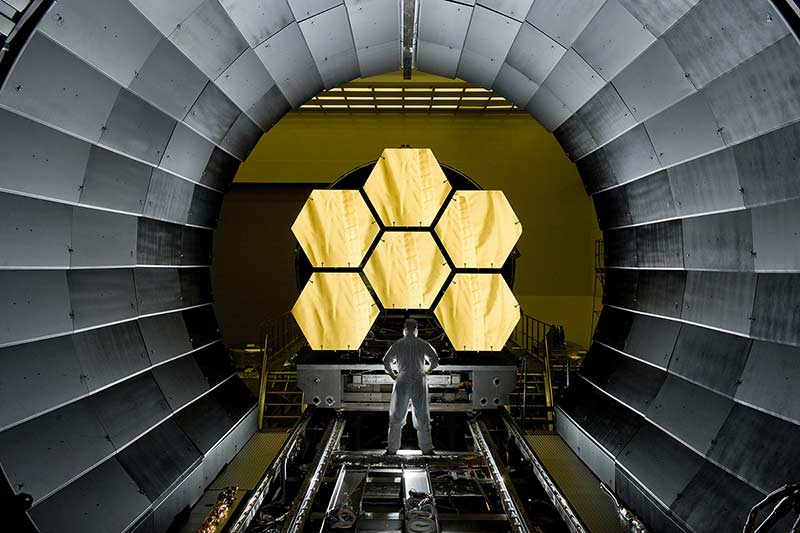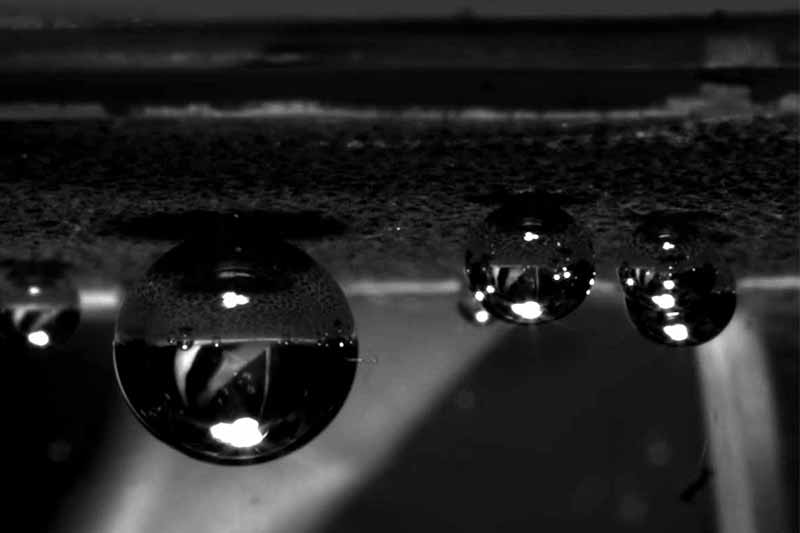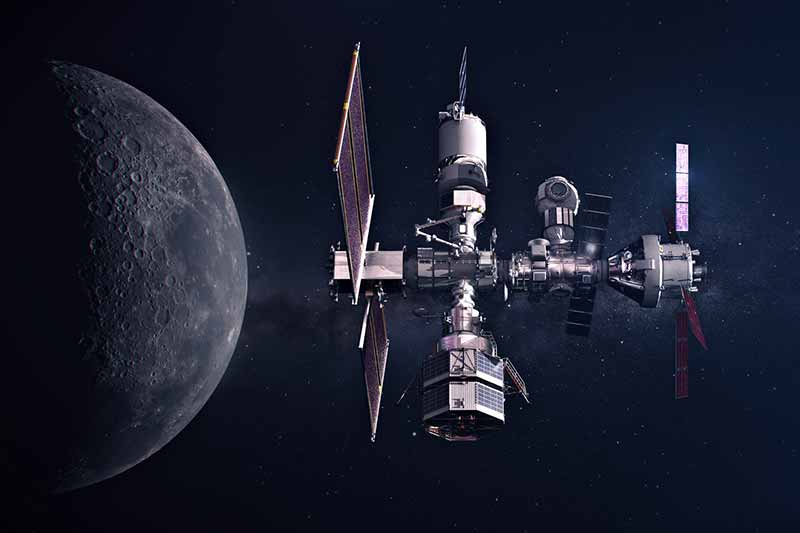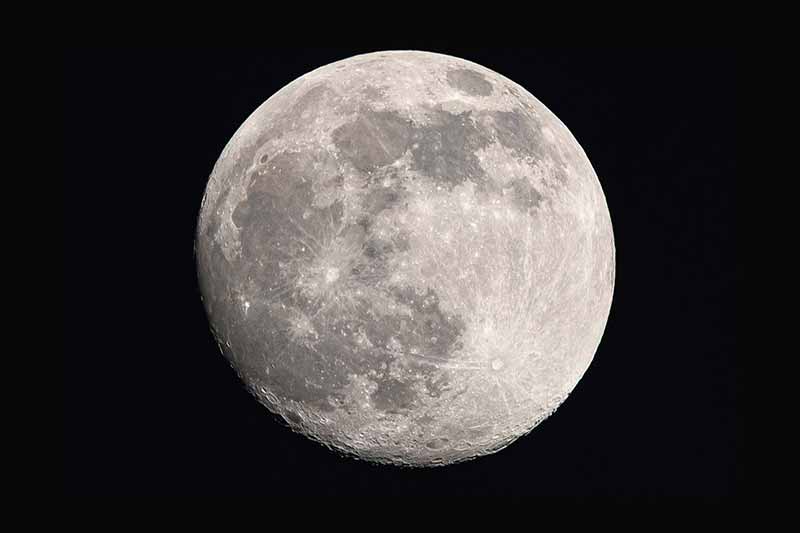During the last week of November 2020, with the worldwide COVID-19 pandemic raging and finals week underway at the University of Notre Dame, Christopher Howk, professor of physics, decided to hole up in a cabin and churn out a proposal to do research using the most highly anticipated astronomical tool in a quarter century.
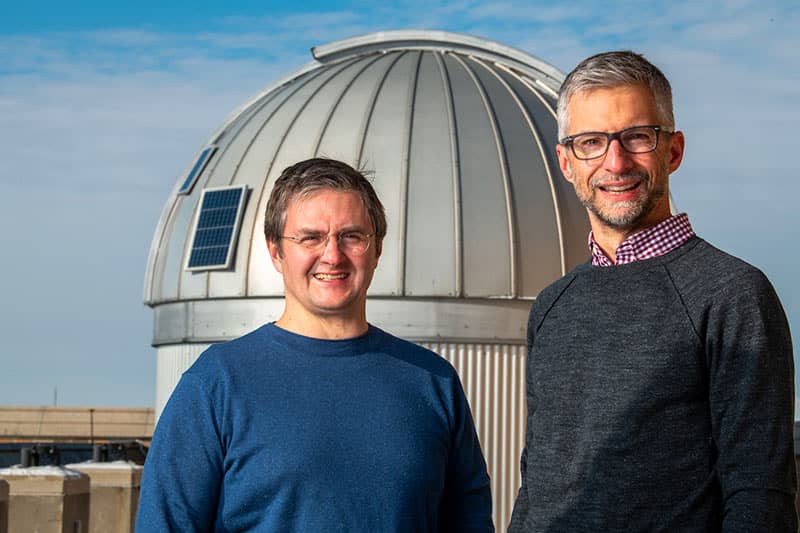
The proposal involved using the James Webb Space Telescope (JWST) to study how galactic dust and gas is expelled from the plane of a disk galaxy similar to the Milky Way. If his proposal were to be accepted, he, along with Research Professor Nicolas Lehner and other collaborators, would be among the first astrophysicists to use the space-based infrared telescope as an aid to learn how our universe formed.
His research concept needed so much work, he said, that it was almost overwhelming.
“I was at this house for about five days, just locked away by myself with a bunch of food and some wine, and that’s how I wrote the proposal,” Howk said. “I had so much to learn about how this telescope works and needed to figure out how we can even do this thing that we wanted to do.”
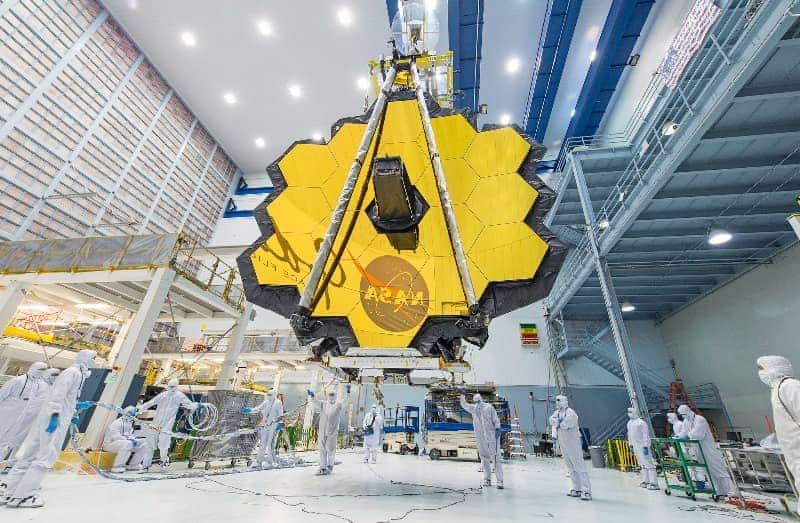
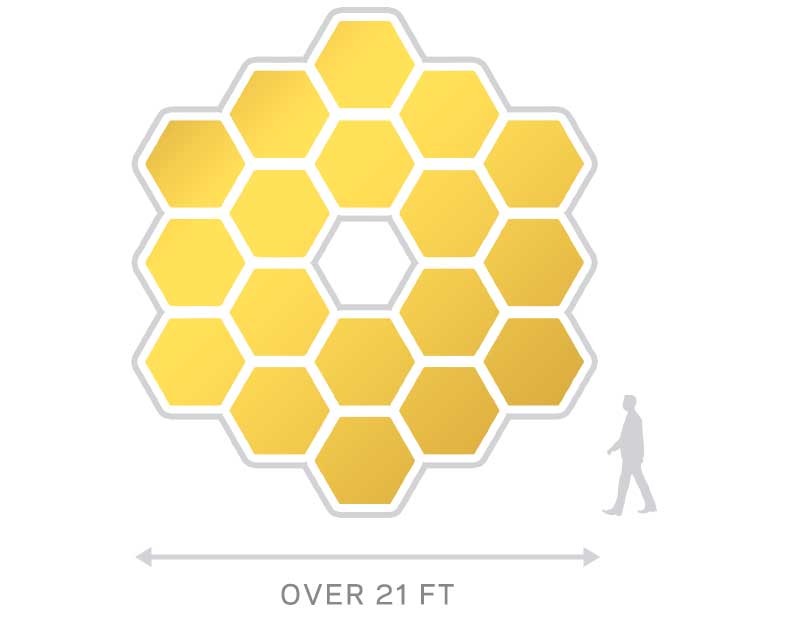
The telescope, conceived of in the 1990s with an original launch date scheduled in 2007, is NASA’s largest and most powerful. Its primary mirror, which consists of 18 gold-plated hexagonal segments that unfold like a 21-foot blooming flower 1 million miles from Earth, dwarfs that of the Hubble Space Telescope.
Excitement over the potential for research had astronomers on the edges of their seats for years, waiting for launch day. And waiting. Then waiting some more.
The day finally came at 7:20 a.m. Dec. 25, 2021. That morning, the Ariane 5 rocket, containing the telescope, blasted off from its European Space Agency launch pad in French Guiana, a territory of France on the coast of South America.
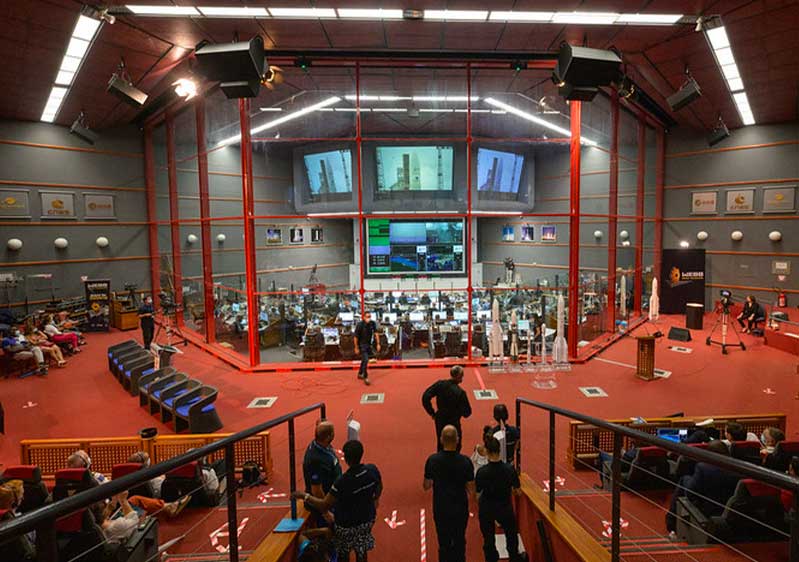
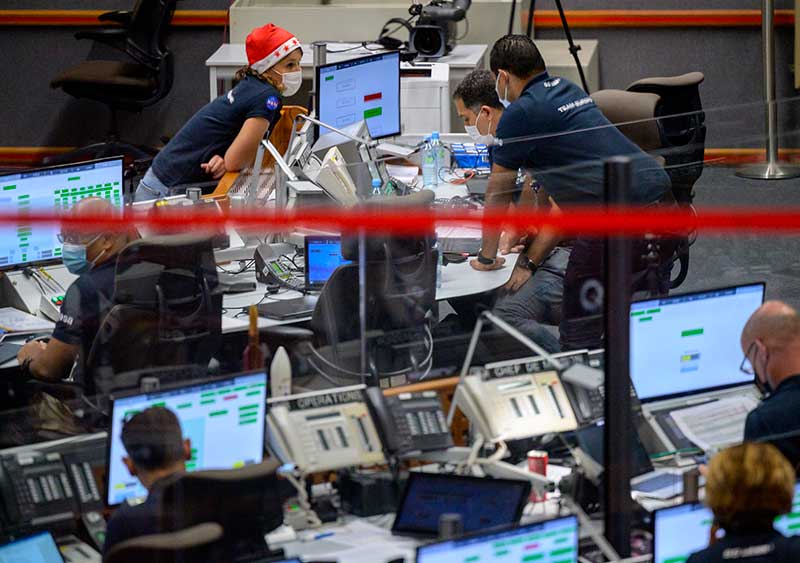
NASA considers the launch of the JWST “an Apollo moment,” and the observations and experiments completed while using the instrument are expected to add to or change the understanding of the universe. The level of detail from pictures it returns, possibly in early summer, are expected to be exquisite and beyond the breathtaking views scientists and public are accustomed to from Hubble, which has produced many spectacular images itself.
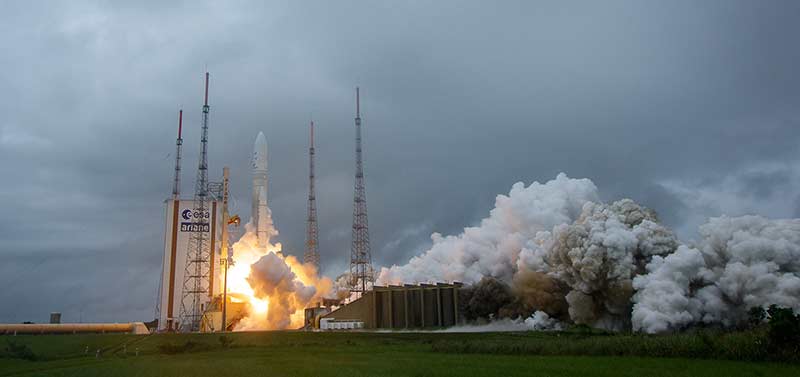
The JWST views the cosmos in a different spectrum of light — infrared — than Hubble, which relies on visible and ultraviolet light. Because infrared is a better tool for measuring heat, scientists will be able to use the observations from the JWST to more clearly assess the temperatures of stars and dust.
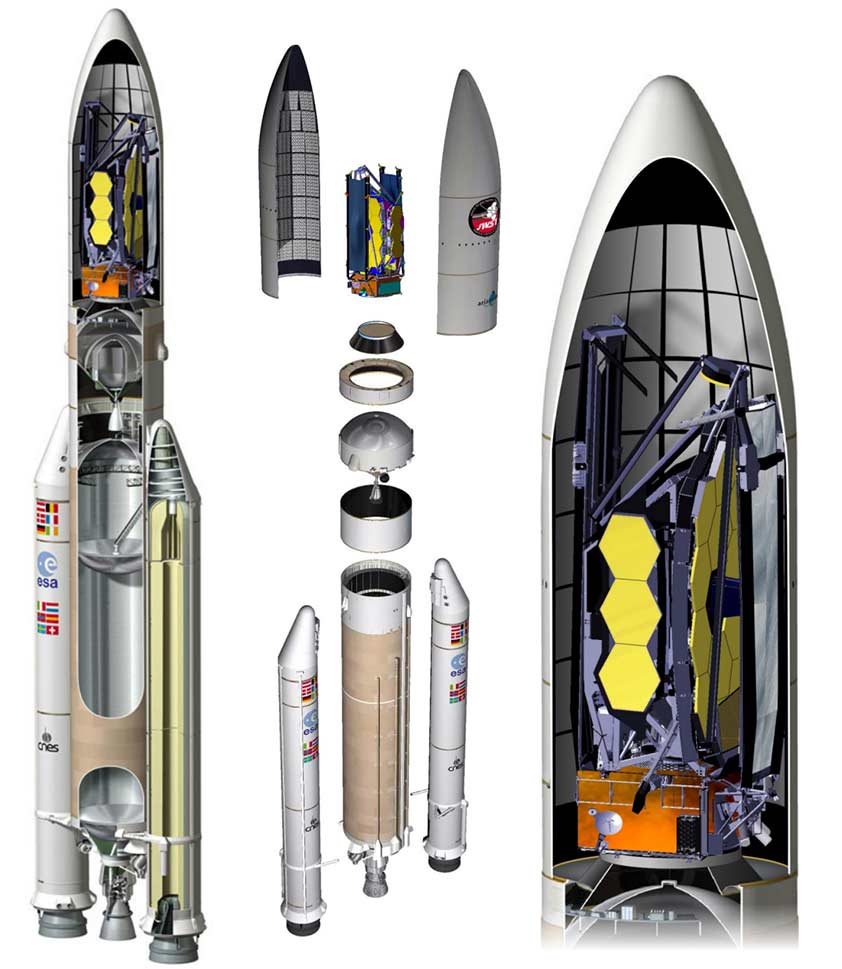
It was curiosity about the dust expelled from galaxies during star formation that inspired Howk and Lehner to pitch their research for the JWST General Observer program that begins this summer. The hours Howk spent in collaboration with Lehner, not to mention the hours of concentrated work he completed in that Michigan cabin, however, proved fruitful.
The proposal by the research team, which also includes scientists from Michigan State University and the Space Telescope Science Institute, was one of 268 specific programs selected for the first round of projects, and should begin within a few months.
Using the instruments on the JWST, Howk and Lehner will be studying a galaxy called NGC 891. The spiral galaxy, similar to the Milky Way, is located about 30 million light years away in the Andromeda constellation. They will compare it to the nearby galaxy Messier 82, also known as the Cigar Galaxy. Messier 82 is a small starburst galaxy, so named because it is forming stars at a prodigious rate. It exhibits a huge outflow of gases driven by an explosion.
Though researchers suspect that the outflow in the Milky Way is more like a percolation, they plan to use the JWST to discover whether NGC 891 also expels similarly explosive winds.
“We’re trying to understand what’s happening in the disk of the galaxy and what is happening much farther away from the galaxy,” said Lehner, who hadn’t yet started his doctoral program when the idea for the JWST was formed. “With James Webb, we should be able to get a greater understanding of that process.”
They hope to have a clearer picture once their 16 hours of observations with Webb are completed, though data from their work won’t arrive until late 2022 or 2023.
Even astrophysicists, who are used to long periods of time between experiments and results, consider that a long lag time. Lehner said one in four projects were accepted in this project cycle — up from an average of one in seven for other astrophysics research project proposal cycles — and suggested that fewer astronomers wrote proposals because of the time between the telescope’s commissioning and the retrieval of data.
The reason for the long wait between experiment and data is related to the complexities of the instrument and its placement. For Howk and Lehner, these limitations mean their experiment will take place around January 1, 2023.
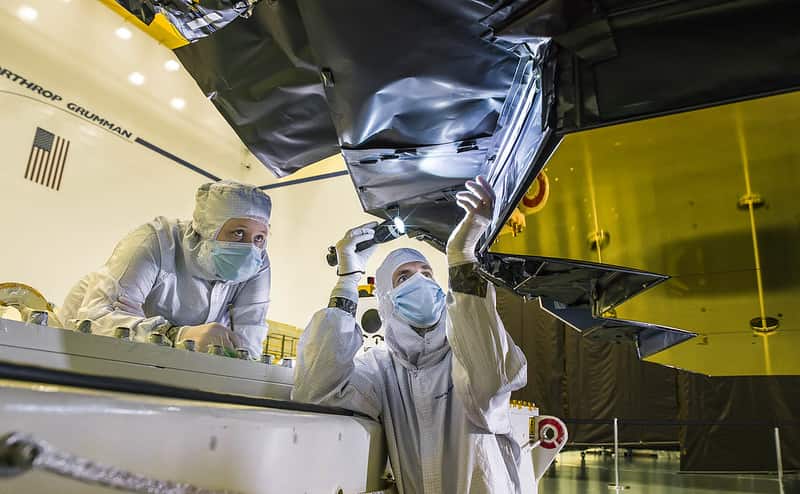
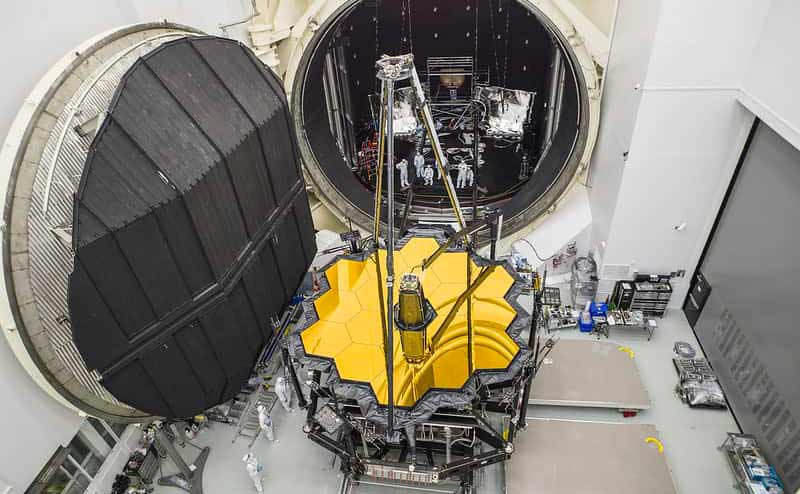
“Webb has to constantly keep its sunshade between the telescope and the sun; this helps keep the telescope and instruments cool. So, it has to wait to look for an object when it's on the opposite side of the sky from the sun,” Howk said. “Between that, getting the right orientation of the telescope on the sky (to make the shape of the map we need), and having the most efficient schedule (thereby allowing as much science to be done as possible), it limits the time in which the observations can get made.”
So until they start receiving data, Howk and Lehner — and every other scientist — will have to wait and watch the progress of the commissioning activities just like any other member of the public.
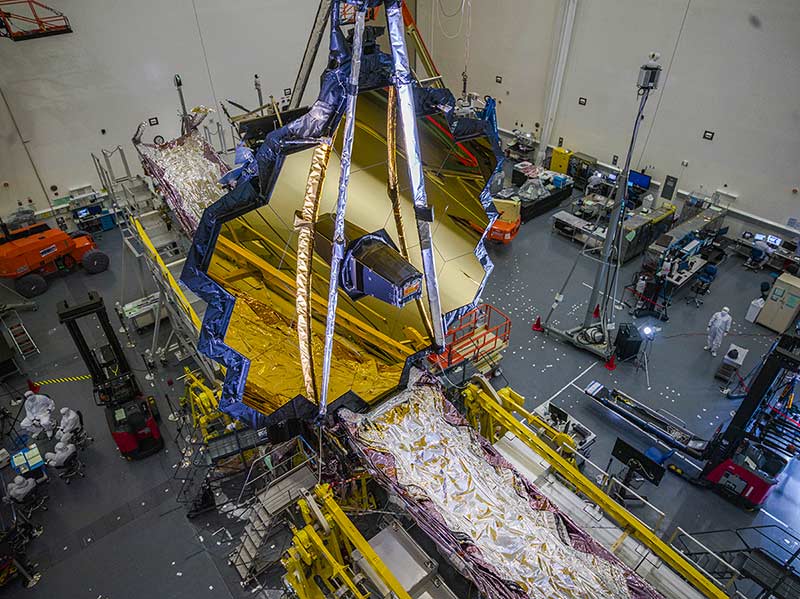
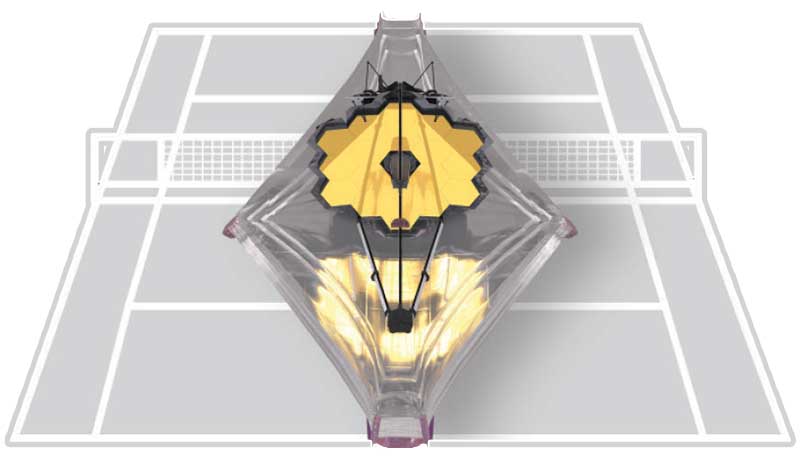
The telescope construction and other logistics encountered a bevy of setbacks since the program’s inception. In the beginning, the setbacks were monetary, and the project, originally capped at $8 billion set by the U.S. Congress, cost $10 billion in the end. There were other issues, too. In 2018, for instance, a sunshield the size of a tennis court, which needed to be unfurled in space after the launch, ripped during a practice deployment. In 2020 delays were caused by the COVID-19 pandemic.
Shipping the telescope was also a logistical feat. Officials initially planned to fly it to Cayenne, the capital of French Guiana, located on the northeast coast of South America. But the road for the 60-mile drive from the airport to the rocket’s launch pad is made of sandy soil and cannot support the weight of the telescope. So the JWST was shipped from California through the Panama Canal to French Guiana, a trip that took 16 days.
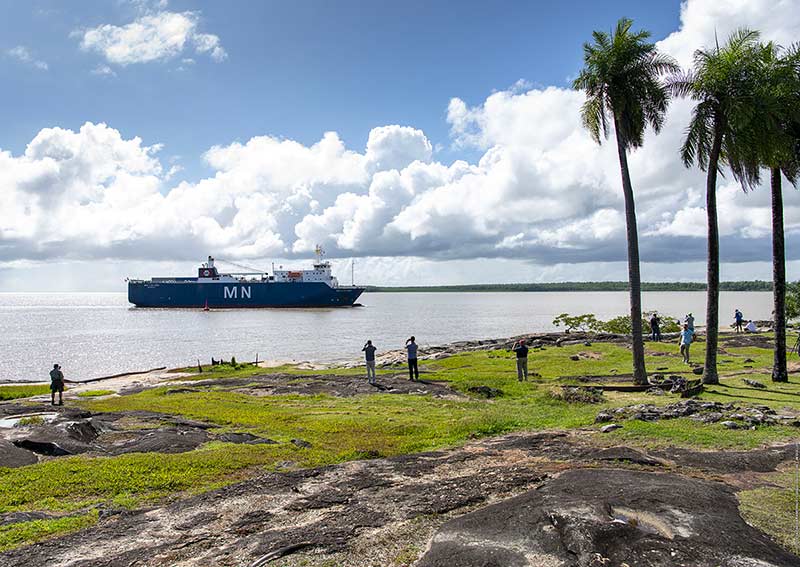
In December alone, the launch was moved back a couple of times, with NASA finally settling on Christmas morning. Howk and his wife were at his mother’s house for the holiday, and the three of them woke up early to catch the broadcast of the launch.
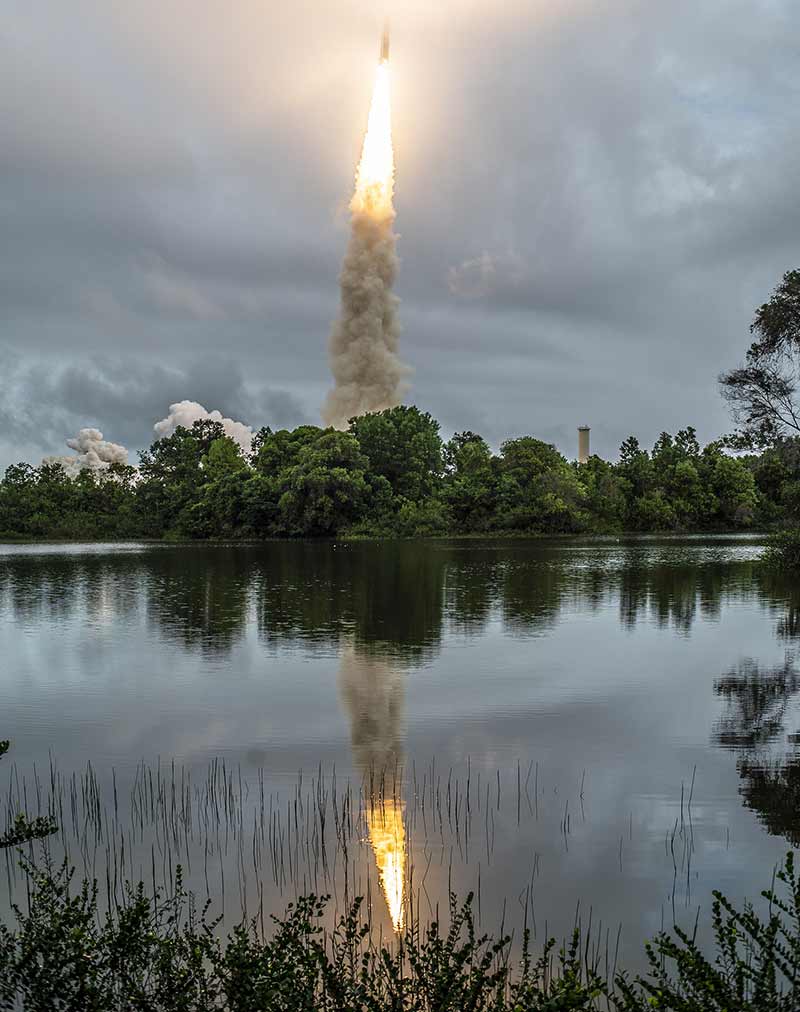
“I wouldn’t say I was nervous, but rather, simply excited,” Howk said. “If we did not have time on the telescope, I would of course have been interested and excited in its launch, as it represents a huge success for the astronomical community.
“However, knowing that we were going to be able to use that observatory to do something we’ve wanted to do for two decades made it much more personal.”
Lehner was so excited that he took a photo of the moment the JWST started its journey on its own, after the boosters separated and fell into the ocean and the nose cone dropped.
“Kind of silly when you think about it, but I wanted to capture that moment. It’s certainly the best thing I’ve seen for a very long time,” Lehner said.
Within three weeks after launch, the telescope deployed its mirror segments until they were all in place, except for tiny adjustments in 1mm-day increments and smaller — sometimes the width of a human hair until they reached perfection. Next, the JWST completed some planned mid-course corrective burns to reach the Sun-Earth Lagrange point, called L2. This final destination, which it reached on Jan. 24, is one of the areas where gravity from the sun and Earth keeps satellites balanced — more than 932,000 miles behind the Earth as viewed from the sun.
The instrument is continuing its cooldown, and in four to five months the telescope will be commissioned after all the optics are aligned and instruments calibrated.
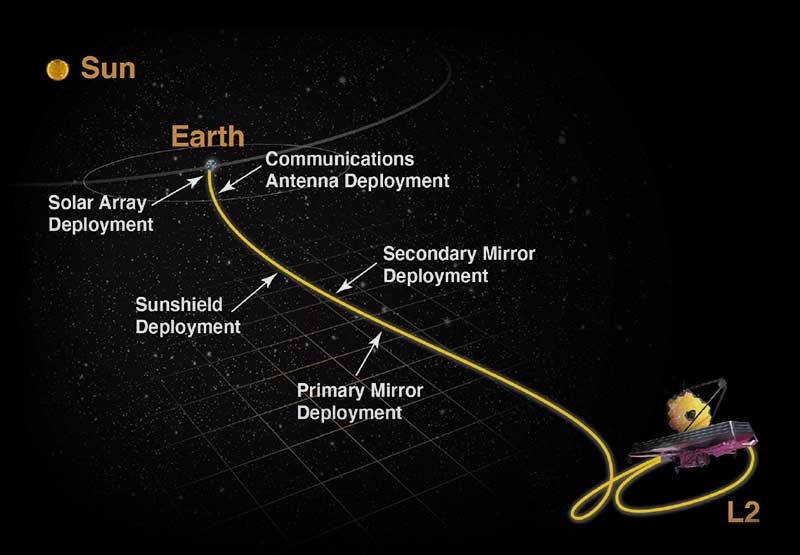
Though Howk and Lehner are the first in the Notre Dame Department of Physics to conduct research during the initial round of JWST observations, others in the department have an interest in the progress as well. And they’ve felt an equal amount of joy at the successful launch.
Lauren Weiss, assistant professor, remembers attending her middle school science fair during the 1990s, where she received a refrigerator magnet that advertised what the JWST was called then: the Next Generation Space Telescope. Weiss recalls that “2006” was printed on the magnet as the launch date.
“I thought that was cool; I was going to graduate from high school in 2006, and it’s going to be awesome to have this new telescope,” she said. “But now I’m a professor, it’s 2022, and it just launched.”
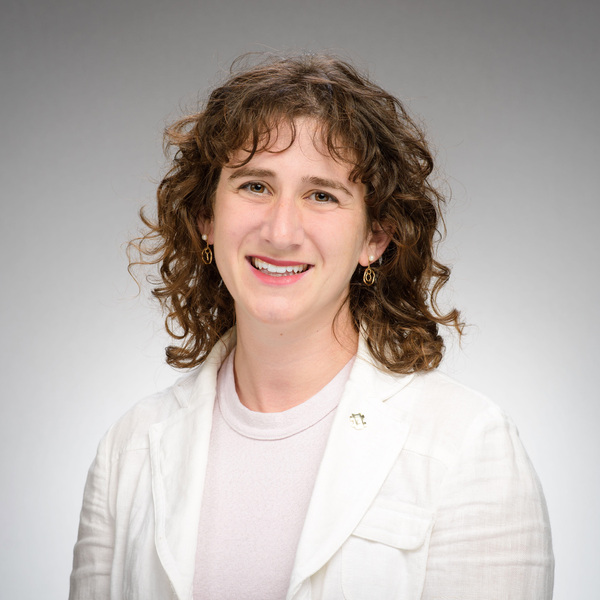
“An important result to come out of the biochemistry community is that the presence of a rocky substrate enables the chemical reactions that actually give rise to life.” —Lauren Weiss
Weiss uses a combination of ground- and space-based telescopes in her research to locate and characterize exoplanets, which are planets that revolve around a star other than our sun.
She and one of her thesis students at the University of Hawaii, where Weiss worked before coming to Notre Dame in 2021, are interested in eventually using the JWST to measure the temperature difference between the day and night side of a planet they discovered. That planet was found using the NASA Transiting Exoplanet Survey Satellite (TESS) space telescope and the W. M. Keck Observatory in Hawaii.
Similarly, most of the planets she characterizes were discovered with space-based telescopes, and with the Kepler space telescope in particular. Kepler and its extended mission, K2, were instrumental in helping researchers discover more than 2,600 planets in four years. The missions also surveyed 500,000 stars between 2009 and the telescope’s retirement in 2018. TESS replaced Kepler in the search for exoplanets.
One planet of interest to Weiss is about three times the mass of the Earth, but orbits very close to its star. It’s hot — 3,000 degrees hot.
“An important result to come out of the biochemistry community is that the presence of a rocky substrate enables the chemical reactions that actually give rise to life,” Weiss said. And while 3,000 degrees might be too hot to support life, that’s the planet’s average temperature. It is tidally locked, meaning the same side always faces its star. And it is one of the oldest rocky planets ever discovered.
Weiss would like to use the JWST to determine the planet’s elemental composition, and whether it has an atmosphere of silicate vapor that transports heat from the day side to the night side. While it is an experiment possible with Hubble, the JWST’s infrared capabilities will provide her with unique information not possible with the older telescope. Also, using the JWST is more practical because of its orbit far from the Earth, around the second Lagrange point.
“Hubble orbits the Earth, and it is rare to get more than 20 to 30 minutes of uninterrupted observation time because the Earth is in the way, and there are frequent data downloads that also interrupt observations,” she said.
Jeffrey Chilcote, assistant professor in the Department of Physics, is also excited about the possibilities the JWST’s infrared capabilities can open up in the search for exoplanets, particularly cooler planets that are more difficult to see from Earth.
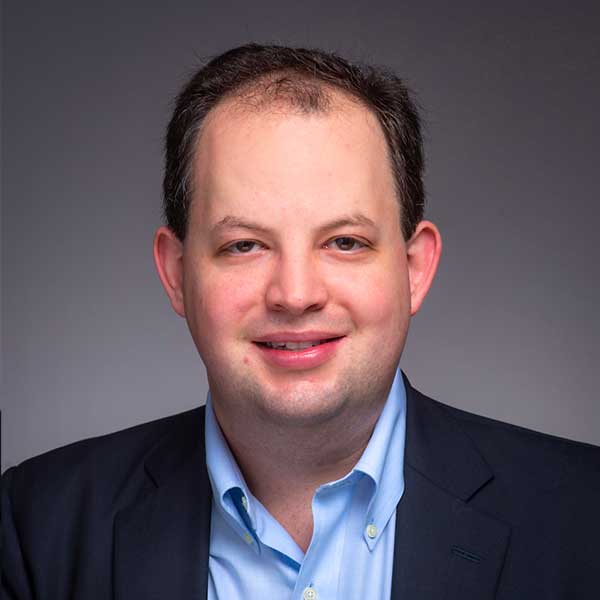
“It was built for great extragalactic discoveries.” —Jeffrey Chilcote
Telescopes of all types are good at detecting dim objects, but it is difficult to detect planets because they are so close to bright stars. The spectral range of infrared telescopes can make this detection — often described as being able to see a firefly near the beacon of a lighthouse — more apparent. Unfortunately, Earth-based infrared telescopes must be built on tall, dry mountains to counter the effects that water vapor has on the images, limiting access and locations for research.
But perched far above the earth, the JWST is a stable platform that will allow it to detect what Chilcote studies and builds astronomical instruments for: direct imaging of older, extrasolar planets. He’s excited to write a proposal to do this research using the JWST, noting that this type of work isn’t what the telescope initially was built for.
“The first directly imaged exoplanets were not discovered until way after JWST was proposed, and even when JWST was in its more mature design and build phase, finding planets was a very young field,” Chilcote said. “It was built for great extragalactic discoveries.
“But for cooler planets, slightly older planets and those around smaller stars, the James Webb should do quite well, especially to be able to look at areas that we can’t access from Earth.”
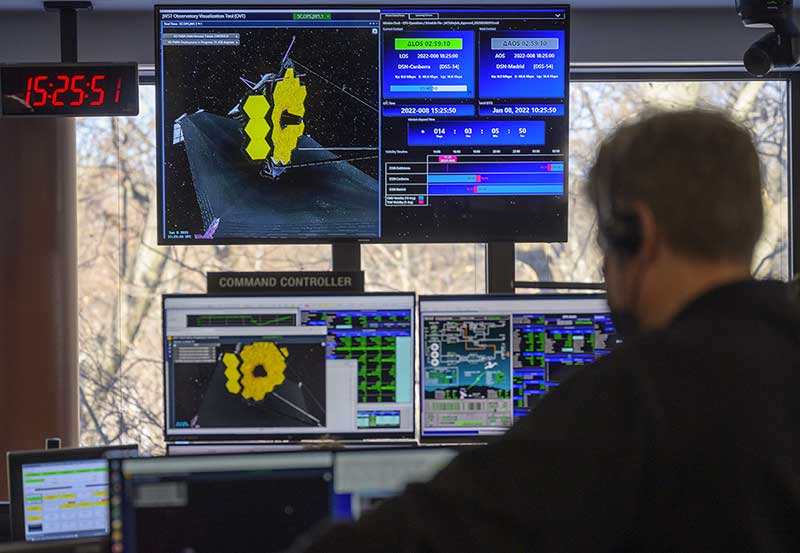
Just as these Notre Dame professors were inspired by the possibilities that are open with the JWST, they envision that students and postdoctoral researchers will be able to gain much from the new tool … without the decades of waiting.
Some data sets obtained from the JWST in the next six to 12 months will be non-proprietary and open to the entire astronomical community. This will give students opportunities to delve into the data, and contemplate the type of work they might like to do during their doctoral and postdoctoral work, Howk said.
The JWST was built with just enough fuel to last five to 10 years, which would have been a relatively short time frame for a space-based telescope program. However, officials from NASA extended their projections about the life of the telescope to 10 years or more because of the precision of both the launch and the planned course corrections. And more precision equals less propellant use at the beginning of the mission.
That’s a relief to researchers. Because data will take so long to be returned, a five-year window would limit the amount of time any scientist had to use the telescope, and could prevent undergraduates interested in becoming astrophysicists from using it at all. Of course, the JWST is in a space where anything could happen, good and bad. Hubble, which is located in low-Earth orbit, was projected to last 15 years. Even though it had an issue with its mirror early in the mission (later fixed during a spacewalk, a method that can’t be used for the JWST because of its location far past the orbit of the moon), it is still operating 31 years later.
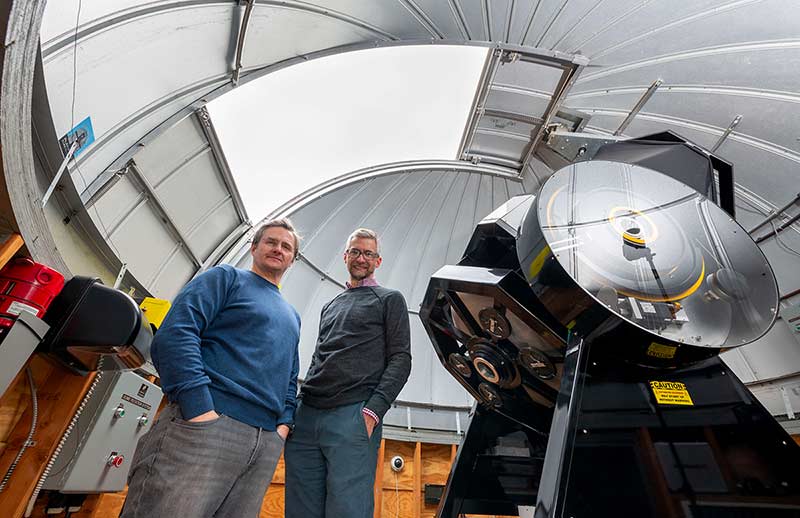
The longer the JWST is operational, the longer it can inspire interest in science. Though many people are compelled to do research in astrophysics to learn about our place in the universe, and “how we came to be,” Howk said, projects like the JWST spark excitement for many different types of science and engineering.
“The James Webb telescope will produce an excitement for science and technology, inspiring the next generation of astronomers and scientists and engineers.” —Christopher Howk
“Astronomy is a gateway science in many ways,” he said. “When people see the pretty pictures returned from a telescope, a couple are going to get excited about becoming astronomers, but many others will get excited about studying science in general.”
The photos from the JWST might be their entry into science, but they might decide to become cancer researchers. Or, they initially want to become engineers for NASA but during their studies encounter interesting questions they would like to explore further, and become civil engineers who build roads instead.
“The James Webb telescope will produce an excitement for science and technology, inspiring the next generation of astronomers and scientists and engineers,” said Howk.
And perhaps one day, those scientists will escape to a cabin for a weekend, writing a proposal for research using a future “Apollo moment” technology.
